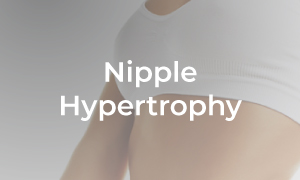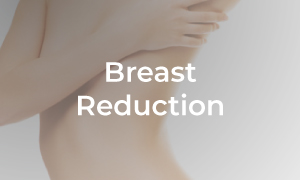Nipple Reduction
In patients with nipple hypertrophy, the nipple is often prominent, with lengths more than 1 cm and some even reaching up to 2 cm. The nipple may have an increased width and the shape of the nipple may appear irregular. Nipple hypertrophy mainly occurs in women, although this condition may affect men as well. Patients with nipple hypertrophy often complain of discomfort and chafing when wearing heavy clothing, and they may feel embarrassed to wear thin clothing and swimsuits because the prominent nipples are hard to conceal.
Nipple Reduction is a minor surgical procedure that aims to reduce the size and improve the shape of the nipples. Nipple reduction can reduce the height and width of the nipple, reshape the nipple into a more desirable form and treat nipple asymmetry. There are many different techniques of nipple reduction. We employ the circumferential sleeve skin resection technique that has low risk of interference with nipple sensation and lactation function. This technique also delivers excellent aesthetic results with scars that are hardly noticeable because they are located at the nipple-areola junction and the adjacent nipple stalk.
Preparation
-
Inform the doctor of any pre-existing medical conditions and drug allergy. All medical conditions must be treated and stabilized before surgery.
-
Stop smoking at least one week before surgery. Smoking is harmful to wound healing and increases the risks of other post-operation complications.
-
Stop the following medications and supplements from one week before surgery until one week after surgery.
-
All supplements containing vitamin E, ginseng, ginkgo, garlic, fish oil, and other ingredients that increase bleeding during the procedure. Other supplements, traditional medicine, and herbs, in which ingredients are unknown, have to stop as well.
-
Medicine that increases bleeding during the procedure such as aspirin, NSAIDs, and warfarin. However, you may need to consult your physician who prescribed the medication before you stop them.
-
-
On the day of surgery, wear simple and comfortable clothing. Do not wear any makeup. Do not wear any jewelry and metal objects on the face and body.
Surgery
Duration: One hour
Anaesthesia: Local anaesthesia
Hospitalization: Not required
Recovery*: Back to work the next day, light exercise after one week, heavy exercise after 3-4 weeks.
*The actual speed of recovery may vary from person to person.
Technique: We use the circumferential sleeve skin resection technique. Only the outer surface of the nipple is removed. The core and the top of the nipple which contains the milk ducts and nerves are preserved.
Post-operative Care**
-
What to expect:Swelling usually peaks on the second to third day after surgery and will gradually subside after that. Post-operative pain is usually minimal.
-
General care:
-
Avoid smoking for at least one month. Smoking increases the risk of wound complications.
-
Avoid pressure on the nipple. Wear a loose bra.
-
Adequate rest and sleep are helpful for a speedy recovery.
-
Be relaxed and calm. Contact the clinic if there are any queries.
-
-
Medicine:Finish the oral antibiotics as prescribed. Take the painkiller when necessary.
-
Wound care:Leave the wound dressing on until coming back for review. Change the dressing if it gets dirty or soaked. After removing the wound dressing, clean the wound with a clean cotton tip soaked with sterile water/saline. Apply antibiotic ointment.
-
Physical activity:Avoid heavy physical activity and exercise for at least one month.
-
Follow-up: Come back one week after surgery for review and removal of sutures.
-
Emergency:If there is heavy bleeding, a rapid increase in swelling, or severe pain, contact the clinic/doctor for advice immediately.
**The instructions in this list are only for general guidance. If you have any specific queries or concerns during the post-operative recovery, please contact the clinic for further advice.








